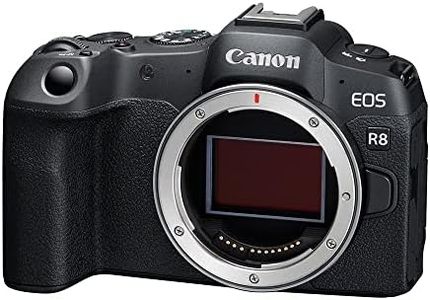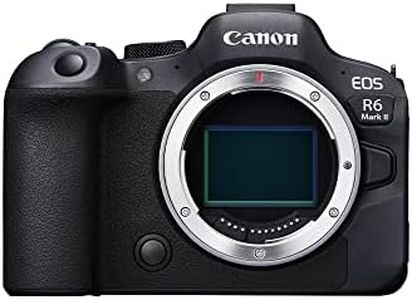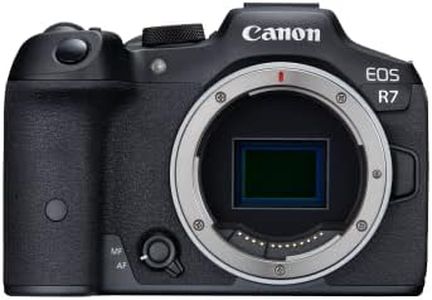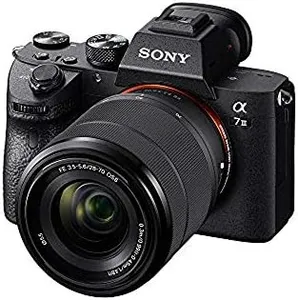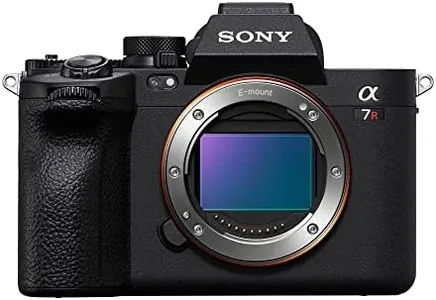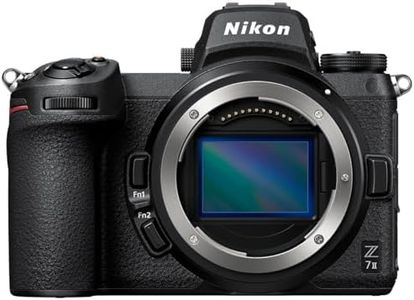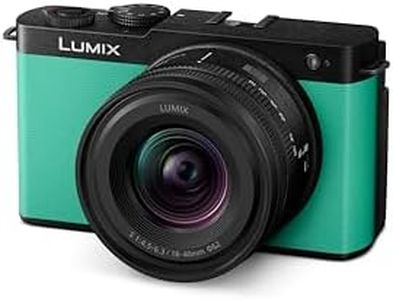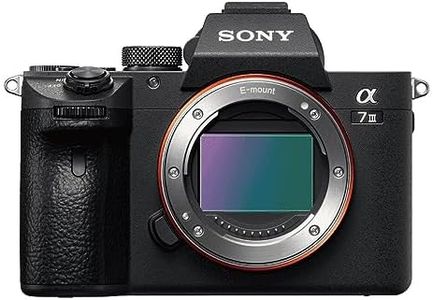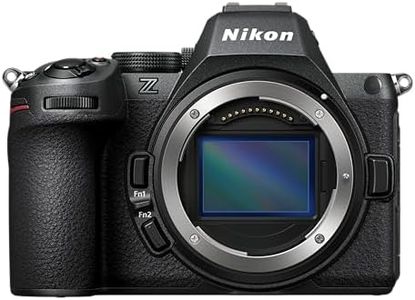We Use CookiesWe use cookies to enhance the security, performance,
functionality and for analytical and promotional activities. By continuing to browse this site you
are agreeing to our privacy policy
10 Best Full Frame Mirrorless Cameras
From leading brands and best sellers available on the web.Buying Guide for the Best Full Frame Mirrorless Cameras
Choosing a full-frame mirrorless camera can seem overwhelming, but it's all about finding something that matches your photography needs and personal style. Full-frame cameras offer excellent image quality and versatility, making them suitable for anyone from hobbyists wanting better results to professionals capturing demanding shots. Start by thinking about what type of photos or videos you want to take—portraits, landscapes, sports, travel, or something else. Knowing this will help you decide which features matter most and avoid paying for things you don't need. Always handle cameras in person if possible to see how they feel and how comfortable the controls are.Sensor Resolution (Megapixels)Sensor resolution indicates how many millions of pixels the camera’s sensor can capture, directly affecting the level of detail in your photos. High megapixel counts generally translate into larger and more detailed prints and allow more cropping flexibility. Entry-level models may have around 20–24 megapixels, which is enough for most uses, while advanced cameras go 30 megapixels and beyond, aimed at professionals or people making large prints. If you mostly view or print at smaller sizes or share images online, you don’t need the highest megapixel count; prioritize other specs instead.
Autofocus SystemThe autofocus system determines how quickly and accurately the camera focuses on subjects. It matters most for action shots, wildlife, sports, or any quick-moving scenes. Some cameras have basic autofocus with a modest number of focus points, while advanced models offer sophisticated tracking features, eye-detection, and hundreds of focus points spread widely across the frame. For everyday photography and portraits, a basic system may suffice, but fast, responsive autofocus becomes crucial if you capture fast movement or unpredictable subjects.
Continuous Shooting SpeedContinuous shooting speed, measured in frames per second (fps), tells you how many photos the camera can take every second while holding the shutter down. Slow speeds (5 fps or below) are fine for landscapes, posed portraits, or casual use. Faster rates (8-10 fps or higher) are very helpful for sports, wildlife, or any situation where you need to capture the perfect moment in a burst. Think about what you’ll be photographing—if action isn’t your focus, shooting speed can be a lesser concern.
Image StabilizationImage stabilization reduces the blur caused by shaky hands, helping you get sharper images, especially in low light or when using longer lenses. Some cameras offer built-in stabilization inside the body, while others rely on lens-based stabilization. If you plan to shoot handheld a lot, or in dim conditions, stabilization can be very helpful. For studio work or tripod use, it’s less crucial, but it’s still a comforting feature for unexpected situations.
Electronic Viewfinder (EVF) QualityThe electronic viewfinder allows you to see exactly what the sensor will capture. Its quality is defined by resolution, size, and refresh rate. Lower-end models may have smaller, less detailed EVFs, while higher-end models offer large, high-resolution displays with smooth real-time feedback. For those who shoot outdoors or need quick, accurate framing, a good EVF makes a big difference. If you often compose using the rear screen or shoot casually, a basic EVF might be sufficient.
Build Quality and Weather SealingBuild quality refers to how sturdy and durable the camera feels, and weather sealing protects against dust, splashes, and sometimes even light rain. Entry-level cameras may use more plastic and lack sealing, making them lighter but less tough. Mid- and high-end bodies offer magnesium alloy parts, strong construction, and seals around buttons and joints. If you expect to shoot outdoors, travel often, or need a rugged companion, prioritize better build quality and sealing. For mostly indoor or careful use, these features are less essential.
Video CapabilitiesMany full-frame mirrorless cameras also offer strong video features, including 4K or even 8K recording, advanced autofocus, and features like slow motion. Simpler models may only offer basic HD video with fewer controls. If you plan to do any serious video work, look for advanced video specs, input/output options, and reliable autofocus in movie mode. For mainly still photography, even basic video specs are often sufficient.
Lens EcosystemThe available lenses for a camera system greatly affect your flexibility for different photography styles. Some systems have a mature and diverse set of lenses, including options for every imaginable need, while others are still growing. Think about the types of lenses (wide-angle, telephoto, macro, etc.) you might want and check what's available for the mount you're considering. If you like to explore new creative styles or need specialty glass, a broad lens selection is a significant advantage.
Ergonomics and HandlingHow a camera feels in your hands and how easily you can reach and adjust the controls is often overlooked, but it’s critical for enjoyable shooting. Larger cameras tend to fit bigger hands and have more physical dials, while smaller models are lighter and more travel-friendly. If possible, try holding different cameras to see what fits your hand and shooting style, especially if you plan on long shoots or carry your camera a lot.
